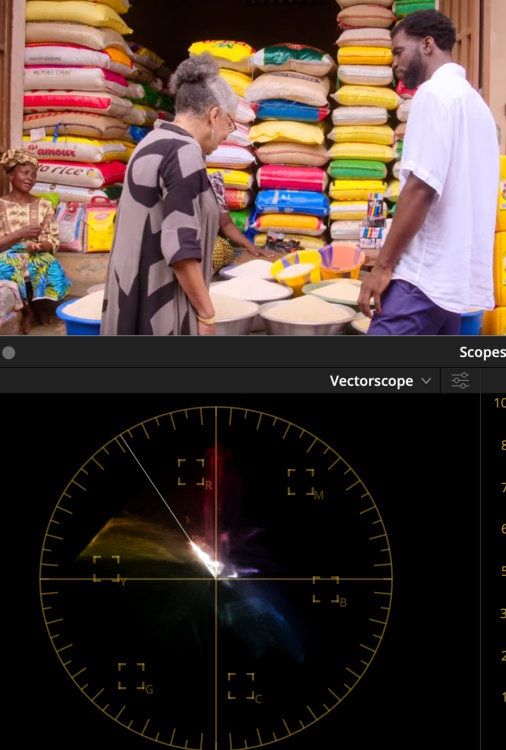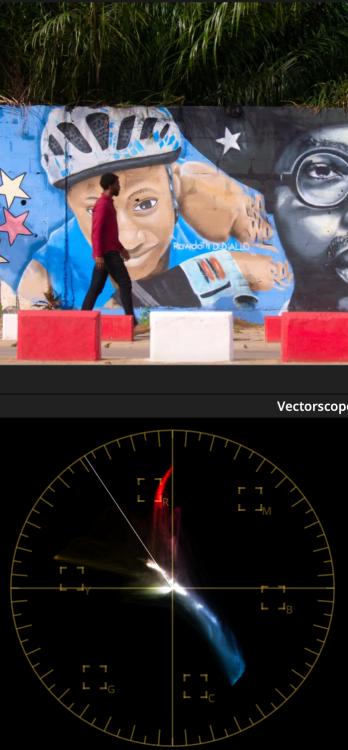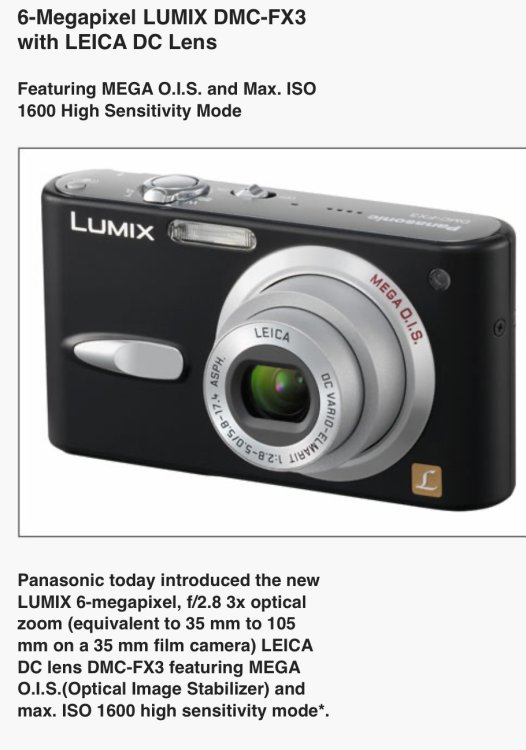Leaderboard
Popular Content
Showing content with the highest reputation on 04/02/2025 in all areas
-
Got my S1RII and like I thought, I'm a bit disappointed. Stills are great with very good resolution, the Dpreview studio test is odd because the camera is very sharp even when using not so sharp lenses like the 28-200mm. But there are better cameras for photography, AF implementation is weird, AF-S is only DFD and the buffer is a joke when shooting high fps pictures. Video quality is the same than S5II, a bit less sharpening but still the same video engine, it still looks worse than the old gen, the resolution just feels not as good, no matter the mode or resolution used the image doesn't look really sharp in a good way, lines are not straight, some details are missing like if a filter or blur in some part of the image was added. The image looks like there is a slight oil painting touch softening the image at the core. Like on the S5II the rec 709 profiles are worse than V-log. So it is a bit ironic from Lumix to say "discover unseen details" for their S1RII tagline. Because of this the moire is not too much prononced. Some will like this tradeoff. I tested Prores Raw 6K Pixel to Pixel and the image is much better, the weird processing is gone. But I can't get the image right when using Premiere Pro, colors are off, I don't think Prores Raw is really fully supported by Premiere. The crop and the data size also makes this mode hard to use and it is not supported at all by Resolve. Using the Canon R5 or Z6III for raw is much easier as the files are better supported and there is no crop. The rolling shutter is just bad when using the DR boost, I didn't think I could see it but I can see jello even with relatively slow movements. In addition 24fps is the max fps we can use with DR boost and Open Gate. I can't select 30fps, maybe a bug. I think the best modes are 6k or 4k 60fps, there is only a slight crop, worse DR because no DR boost and the image quality becomes even slighltly worse but there is not a big difference with the 30fps and the rolling shutter is better. I quickly tested the 4k 120fps and as if it isn't enough that the 4k30fps was not great, the 120fps is even worse : blurry, bad details, just unusable. When selecting Pixel to Pixel, the quality is better but again these crop make these Pixel to Pixel modes hard to use and feel like we are using a S35 camera. Stabilization is the best in the market and for me it's the main reason I still use Panasonic (with Open Gate too). But the S5II is as good ... The S1RII feels like it was created for people taking mostly photography of still subjects. And for this the camera is good, not the best DR performance but nice colors and impressive 177MP handheld mode (the image makes a very long time to create though, much longer than on the S5II). For video it comes with marketing bait as 8k and 4k 120fps. The 8k like every other modes except raw is too much processed, it has high rolling shutter when the DR boost is enabled and the 4k120fps is not good at all. Yes we can do a lot of things with this camera but with big penalties most of the time. The added Prores Raw is questionable too, the files are not supported in Resolve and the crop is really disappointing. The fact remains, however, than the S1RII is the only affordable high resolution camera with acceptable autofocus for L mount. However, I don't see anything which could attract new users to Lumix or L mount, the S5II is a much better value for Youtube and other social media creators. And the A7RIV is much cheaper and has better AF for stills. 3600€ is a lot of money but I would have happily spend a bit more to get better video engine, better rolling shutter and 8k raw. As things stand at the moment with the current firmware, I think the right price should be more about 3200€. About the reviews available online like the one from Northrup, I think the best is to always wait for some Chinese or Korean reviews, they provides much more informations and are much more unbiased than any Northrup or Undone reviews. Here is an exemple of a good and accurate review :4 points
-
I’m going to go out on a limb and say that you definitely won’t get either in that Blackmagic presentation 😀3 points
-
One that would be interesting is if they took the original UMP12K Super35 sensor and put it in the Pocket 6K Pro body. Though I suspect they would need to add too much power to make it viable. I’m hopeful that they have a firmware upgrade for the Micro Studio 4K G2 that allows the use of the USB-C monitor they make for the PYXIS. Or at least one that switches on the Bluetooth module we all know that’s in it but they inexplicably won’t let us use!3 points
-
OK, so we have until Friday to indulge in baseless wild speculation about what the new products will be. Watch along live here.2 points
-
Panasonic Lumix S1R Mark II coming soon
newfoundmass and one other reacted to wushuliu for a topic
"The S1RII feels like it was created for people taking mostly photography of still subjects." I guess I don't understand how anyone thought it would be otherwise. I mean, that's what the R stands for. I continue to be amazed at how the online crowd managed to psyche themselves into thinking camera was going to be something it was never intended to be. It's a photo-centric camera with a massive video bonus. It's not an S1HII. It's not a Sony A1II. Especially considering only 6 weeks ago we all thought it was going to be just a cheaper Leica SL3 (cue the moaners saying 'I wish it was' as if there wouldn't be a horde of complaints). I just got mine and it's exactly what I wanted. Now I can get off the terminally negative online train and get snapping.2 points -
Blackmagic NAB 2025 Preview - 4th April 2025 4pm BST
zerocool22 and one other reacted to eatstoomuchjam for a topic
I don't know if the 16TB media module for the Ursa Cine series has been officially announced yet. If not, I'm sure it will be there. Though I'm not completely sure who the target market is - people who really want to cry when they 15 hours of footage to a media failure? Along those lines, a hope is that they'll announce a smaller media module reader for an individual module - one that costs less than like $1k. Right now, when using the media module, offload options are USB to the camera, 10gE to the camera, or the expensive rack-mounted media module reader. I think a lot of people are hoping that they'll announce a 6K or 8K camera using a cheaper variant of the UC 12K sensor.2 points -

Adolescence on Netflix: Technique & Creativity
Katrikura and one other reacted to Andrew Reid for a topic
Just watched the first episode. Very good stuff. The single take is extraordinary but almost seamlessly unnoticed at same time.2 points -
Everyone is talking about how they used the Ronin 4D on the "Adolescence" and how well it did. I bet they only used it in like 4 shots though.2 points
-
I have a friend who still shoots GH5 professionally and his clients are happy. Really the GH5 represents insane value these days.1 point
-
Blackmagic NAB 2025 Preview - 4th April 2025 4pm BST
eatstoomuchjam reacted to Chrille for a topic
Might also be that they dropped the 4k Cinema price so they can sell them off. A OG Pocket siced 4K o 6K cam would be fun.1 point -
Maybe they were going to launch it yesterday but realised the joke wouldn’t be very funny1 point
-
Blackmagic NAB 2025 Preview - 4th April 2025 4pm BST
majoraxis reacted to eatstoomuchjam for a topic
It would be interesting. One thing that I got from the Shane Hurlbut video was that one of the reasons that they built their own media module for the UC12K is that with the UMP, especially in 12K mode, they got lots of complaints about dropped frames due to media not keeping up. It's a little surprising since the data rate at 8:1 isn't all that crazy and in my testing so far, my pretty basic Sabrent CFE cards kept up just fine, but I don't know if I'd have that confidence when shooting for a full day. Anyway. The 9K mode on the UC12K is fantastic. Instead of the 12K UMP sensor, I wonder if they'd do a 9K S35 cut-down UC sensor for it. If they did that with a mirrorless mount (and ideally built-in ND's), then Black Magic would have their second camera I was interested in after the original BMPCC.1 point -
Each time I think to change my two GH5 I check again the old work of Filippo Chiesa with his GH5s and... I save a lot of money 😉1 point
-
What a ride this was. Episode 3 especially... Peak TV. Direction, writing, acting, sound design, everything just falls into place.1 point
-
I've learned a lot about film-making over the years, most of it came through discovery and experimentation, but the best film-making advice I ever got was this... See how much contrast and saturation you can add to your images This probably sounds ridiculous to you, and I can understand why it would, but hear me out. Not only is it deceptively simple, but it's hugely powerful, and will push you to develop lots of really important skills. The advice came from a professional colourist on some colour grading forums after I'd asked about colour grading, and as I make happy holiday travel videos it seemed to be a logical but completely obvious piece of advice, but it stuck with me over the years. The reason I say "over the years" is that the statement is deceptively simple and took me on a journey over many many years. When I first tried it I failed miserably. It's harder than it looks... a lot harder. The first thing it taught me was that I didn't know WTF I was doing with colour grading, and especially, colour management. Here's a fun experiment - take a clip you've shot that looks awful and make it B&W. It will get better. Depending on how badly it was shot, potentially a lot better. It took me years to work out colour management and how to deal with the cameras I have that aren't supported by any colour management profiles and where I had to do things myself. I'm still on a learning curve with this, but I finally feel like I'm able to add as much contrast and saturation as I like without the images making me want to kill myself. I recently learned how the colour profiles work within colour management pipelines and was surprised at how rudimentary they are - I'm now working on building my own. The second thing it taught me was that all cameras are shit when you don't absolutely nail their sweet-spot, and sometimes that sweet-spot isn't large enough to go outside under virtually any conditions, and that sometimes that sweet spot doesn't actually exist in the real-world. Here's another fun and scarily familiar experiment - take a shot from any camera and make it B&W. It makes it way better doesn't it? Actually, sometimes it's astonishing. Here's a shot from one of the worst cameras I have ever used: We're really only now just starting to get sub-$1000 cameras where you don't have to be super-gentle in pushing the image around without risking it turning to poop. (Well, with a few notable exceptions anyway... *cough* OG BMPCC *cough*). Did you know that cinematographers do latitude tests of cinema cameras when they're released so they know how to expose it to get the best results? These are cameras with the most amount of latitude available, frequently giving half-a-dozen stops of highlights and shadows, and they do tests to work out if they should bump up or push down the exposure by half a stop or more, because it matters. Increasing the contrast and saturation shows all the problems with the compression artefacts, bit-depth, ISO noise, NR and sharpening, etc etc. Really cranking these up is ruthless on all but the best cameras that money can buy. Sure, these things are obvious and not newsworthy, but now the fun begins.... The third thing it taught me was to actually see images - not just looking at them but really seeing them. I could look at an image from a movie or TV show and see that it looked good (or great), and I could definitely see that my images were a long way from either of those things, but I couldn't see why. The act of adding contrast and saturation, to the point of breaking my images, forced me to pay attention to what was wrong and why it looked wrong. Then I'd look at professional images and look at what they had. Every so often you realise your images have THAT awful thing and the pro ones don't, and even less often you realise what they have instead. I still feel like I'm at the beginning of my journey, but one thing I've noticed is that I'm seeing more in the images I look at. I used to see only a few "orange and teal" looks (IIRC they were "blue-ish" "cyan-ish" and "green-ish" shadows) and now I see dozens or hundreds of variations. I'm starting to contemplate why a film might have different hues from shot-to-shot, and I know enough to know that they could have matched them if they wanted to, so there's a deeper reason. I'm noticing things in real-life too. I am regularly surprised now by noticing what hues are present in the part of a sunset where the sky fades from magenta-orange to yellow and through an assortment of aqua-greens before getting to the blue shades. The fourth thing it taught me was what high-end images actually look like. This is something that I have spoken about before on these forums. People make a video and talk about what is cinematic and my impression is completely and utter bewilderment - the images look NOTHING like the images that are actually shown in cinemas. I wonder how people can watch the same stuff I'm watching and yet be so utterly blind. The fifth thing it taught me was how to actually shoot. Considering that all cameras have a very narrow sweet spot, you can't just wave the damned thing around and expect to fix it in post, you need to know what the subject of the shot is. You need to know where to put them in the frame, where to put them in the dynamic range of the camera, how to move the camera, etc. If you decide that you're going to film a violinist in a low-bitrate 8-bit codec with a flat log profile, and then expose for the sky behind them even though they're standing in shadow, and expect to be able to adjust for the fact they're lit by a 2-storey building with a bright-yellow facade, well... you're going to have a bad time. Hypothetically, of course. Cough cough. The sixth thing it taught me is what knobs and buttons to push to get the results I want. Good luck getting a good looking image if you don't know specifically why some images look good and others don't. Even then, this still takes a long time to gradually build up a working knowledge of what the various techniques look like across a variety of situations. I'm at the beginning of this journey. On the colourist forums every year or so, someone will make a post that describes some combination of tools being used in some colour space that you've never heard of, and the seasoned pros with decades of experience all chime in with thank-you comments and various other reflections on how they would never have thought of doing that. I spent 3 days analysing a one-sentence post once. These are the sorts of things that professional colourists have worked out and are often part of their secret-sauce. Examples. I recently got organised, and I now have a project that contains a bunch of sample images of my own from various cameras, a bunch of sample images from various TV and movies that I've grabbed over the years, and all the template grades I have developed. I have a set of nodes for each camera to convert them nicely to Davinci Wide Gamma, then a set of default nodes that I use to grade each image, and then a set of nodes that are applied to the whole project and convert to rec709. Here's my first attempt at grading those images using the above grades I've developed. (This contains NO LUTs either) The creative brief for the grade was to push the contrast and saturation to give a "punchy" look, but without it looking over-the-top. They're not graded to match, but they are graded to be context-specific, for example the images from Japan are cooler because it was very cold and the images from India were colourful but the pollution gave the sun a yellow/brown-tint, etc. Would I push real projects this far? Probably not, but the point is that I can push things this far (which is pretty far) without the images breaking or starting to look worse-for-wear. This means that I can choose how heavy a look to apply - rather than being limited through lack of ability to get the look I want. For reference, here are a couple of samples of the sample images I've collected for comparison. Hollywood / Blockbuster style images: More natural but still high-end images: Perhaps the thing that strikes me most is (surprise surprise) the amount of contrast and saturation - it's nothing like the beige haze that passes for "cinematic" on YT these days. So, is that the limits of pushing things? No! Travel images and perhaps some of the most colourful - appropriate considering the emotions and excitement of adventures in exotic and far-off lands: I can just imagine the creative brief for the images on the second half of the bottom row... "Africa is a colourful place - make the images as colourful as the location!". In closing, I will leave you with this. I searched YT for "cinematic film" and took a few screen grabs. Some of these are from the most lush and colourful places on earth, but..... Behold the beige dullness. I can just imagine the creative brief for this one too: "make me wonder if you even converted it from log...."1 point
-
Ronin 4D Price Drops and ProRes RAW license is now $1
Katrikura reacted to eatstoomuchjam for a topic
DJI just dropped prices for the Ronin 4D series. The 6K version is now $4,999 (down from $6,800) The 8K version is now $9,999 (down from about $13,000) The raw license just went from $979 to $1. Wish I hadn't bought it just a few months ago, but that's great news for existing owners who haven't bought it yet. Note that with the base 6K package, the RAW license is likely to be useless without buying an overpriced DJI ProSSD ($800 for 1TB). https://www.cined.com/dji-ronin-4d-price-drop-raw-license-now-1-instead-of-979/ If I'm guessing, I'd say that DJI are both aiming for a big sales bump with all of the press the R4D has been getting lately (especially with Adolescence) as well as finally undercutting the Komodo-X, C80, and Ursa Cine 12K. I'd still say that it wouldn't be my choice if I only had one camera, but since I got it, it's been to set with me for every short film that I've worked on and I've used it every time. The image from it is really nice, especially from the 8K.1 point -
1 point
-
Now I am in no way comparing the 5Diii with ML Raw to your more expensive cinema cameras, but I do agree. The first time I looked at the screen after installing Magic Lantern onto my 5Diii, I saw something a little nicer than anything I had seen on an LCD before. With a few very minor tweaks in post and I was able to get images I had no business getting with my skill set. When I tried the same thing with the FP, I didn't see it and I wasn't able to get the same level as easy in post as it was with my 5Diii. Weirdly, I noticed it more with the 4K 8bit cDNGs than I did with the 12bit... although I admit that the 12bit is a superior image... if only Sigma would turn off the damn NR in their raw files. Anyway, it was definitely easier to see than any run of the mill mirrorless I have used since, though. Although the R7 amazes me in some ways. From what I have heard from various people online, @Mattias Burling included, that quality is there with Redraw, Redcode... whatever it's called. That doesn't mean that modern mirrorless cameras aren't capable of creating amazing images. They obviously are. With the advent of raw codecs and post workflows, I agree that the gap is getting smaller, but... That said, I have no business owning a Komodo, so it doesn't mean much to me and more than likely, depending on what the R6iii looks like, I'll probably buy a Z6iii next... of course I have been tempted by the FX30, so I may give that a shot in the meantime.1 point
-
LUMIX FX3 Killer in April?
majoraxis reacted to Simon Young for a topic
I’d rather wait for the Nikon/RED version https://nikonrumors.com/2025/03/13/new-nikon-z-video-oriented-camera-rumored-to-be-announced-later-this-year-similar-to-the-sony-fx3.aspx/1 point -
I've shot long enough with small sensor, 8-bit rec709 camera's that I got used to "just try to get the recording as close as possible to what you want the final image to look like". So don't drop saturation and contrast to the bottom during recording, only to pull them up in post. This would only make sense if there is a lot of reserve DR in the highlights, and when you are working on a camera where you have to try these tricks, there never is. Never use auto WB (or auto exposure) as this may make the colours and exposure shift during the shot which is very hard to correct afterwards. It's easier if they are off with a constant error, that's quite easy to fix as long as you are not too far off. When using these cameras with limited DR I was quite fanatical with setting the whitebalance manually as these cameras tend to exaggerate differences in colour (and contrast). With mixed lighting, artificial light may seem fiercely red while daylight is fiercely blue at the same time. Now that I've got a camera with good DR (Lumix S5) I just set the WB to cloudy when outdoors and incandescent when indoors. Only when encountering weird artificial light (LED, fluorescent or sodium) I might set a custom white balance. Minor corrections might be required in post but nine out of ten times it looks perfectly natural to me. In daylight, shadows are slightly blue, sides exposed to direct sunlight are slightly yellow, just as it is in real life. Only when all image content is exposed to either shadow or sunlight and the shots are of considerable length I might adjust the WB to the specific light just like how my eyes (or brain actually) would adjust to the colour of the ambient light. It is not so much direct advice that I got but when doing a course on making videos the most important thing I took from it is that people are more predictable then you might think which is especially useful when doing event videography. People are animals of habit and a lot of things we do are ritualized. This means you can always try to think ahead of what might happen next in the coming 10 seconds/minutes/hours and ask yourself what is the most interesting part about that, and how to best visualize that. The result of this is that you will find yourself more often in the right spot at the right time which is I think the most important quality of an event videographer. I remember once recording a wedding video for a friend (I'm not a professional videographer in any way) who also hired a photographer who was just starting out as a wedding photographer. Well, the photographer was actually just a colleague from work for whom this was a nice opportunity to build a portfolio to get started in the business. But I noticed that it happened several times that the photographer had to sprint to the spot where I was already waiting as he realized he was in the wrong spot for what was about to happen next. Always keep anticipating for what might happen, decide what the interesting aspect of that is, and how to best visualize that. You will not always get it right, but the number of times you get "lucky" will increase.1 point
-
Yep. Every time I have tried internet ‘advice’, my result looked shit. And nothing like I wanted it to look like. I recently discovered log. No really. Up until last year, Fuji or Lumix profiles all the way because I could get a ‘better’ SOOC image and the look I was after, and more consistently. But this year I switched to log and now have the SOOC look I am after with a bare minimum of tweaking needed. A SOOC look of course is a combo of factors: sensor, lens, any filters, exp, WB, LUT, in camera tweaks, etc. A consistent WB is key for me also and all my cameras are now set up with 3 custom settings: Log outdoors 5500k 640 iso VND Log indoors 5000k 4000 iso VND Flat profile low light 5000k auto iso removed VND The key factor for me now is workflow and consistency because that allows greater creativity in every other area.1 point











